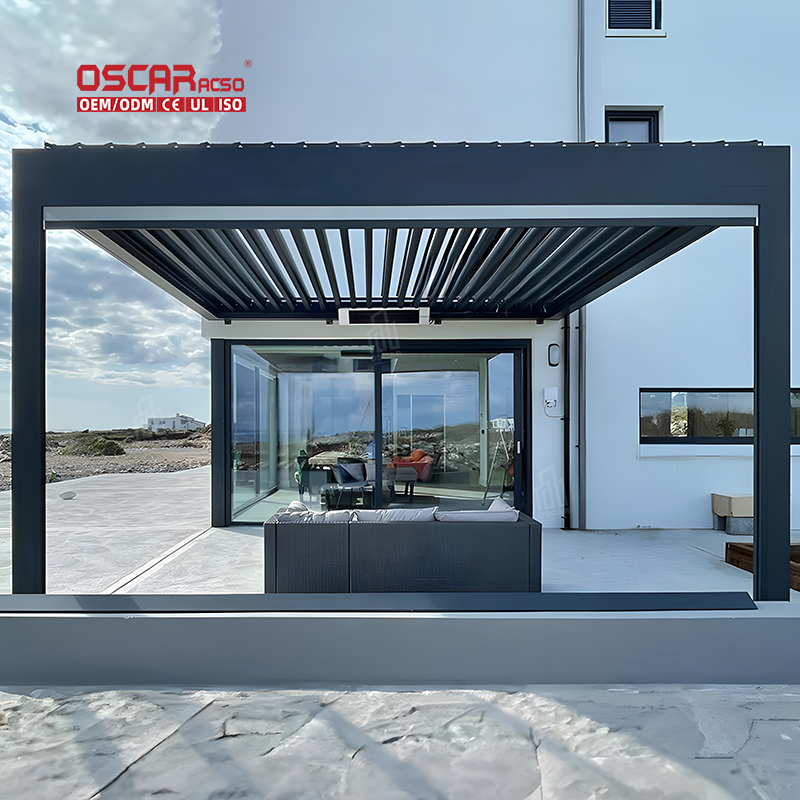Pergola\’s Linguistic Journey, From Italian Vines to Global Gardens
Ever wondered where the word \"pergola\" comes from? 🤔 It\'s not just a garden feature—it\'s a term with rich linguistic...

Ever wondered where the word ”pergola” comes from? 🤔 It’s not just a garden feature—it’s a term with rich linguistic roots that has blossomed across languages and cultures. Let’s untangle the etymology of this beautiful structure and explore how it’s expressed around the world.

🌍 The Italian Roots: A Trip to the Origin
The word ”pergola” proudly originates from Italy, stemming from the Latin word “pergula,”which referred to a projecting eave or a roofed structure supported by columns. This itself might have come from the verb “pergere,”meaning “to proceed” or “to project outward.” In its essence, the Italian pergoladescribes a arched structure or walkway draped with climbing vines, traditionally grapevines 🍇.
This architectural form was quintessential to Italian gardens, providing shaded walkways for relaxation and social gatherings. The term encapsulates not just a structure, but a Mediterranean lifestyle centered around outdoor living, shade, and the dappled light filtering through vegetation.
.jpg)
🗺️ How the World Says “Pergola”: A Linguistic Tour
While Italy gave the structure its name, many languages have adopted and adapted the term. However, some cultures use their own unique words that capture the spirit of a pergola.
- •
English: The term ”pergola” is directly borrowed from Italian and is the most common term. Its synonyms or related structures include arbor(often a smaller, arched structure), bower(a shaded, leafy recess), gazebo(a freestanding roofed structure), and trellis(a latticework framework for plants) .
- •
French: In France, it’s also known as ”pergola,” but you might also hear the charming words “tonnelle”(a garden arch or bower) or “gloriette”(a small garden pavilion) .
- •
Spanish: Spanish speakers use ”pérgola,” closely mirroring the Italian original. In the context of gardens and architecture, this term is universally understood.
- •
Portuguese: Similarly, Portuguese uses ”pergola.” An interesting linguistic neighbor is the word “pérola,”which means “pearl” 💎 and is sometimes confused by learners due to its similar spelling, but they are entirely different words .
What’s fascinating is how many languages have adopted the Italian word rather than creating their own. This suggests a shared appreciation for the specific style and function this structure represents, a concept perhaps best encapsulated by its original name.
🏛️ Beyond the Word: The Universal Language of Design
Perhaps more important than the word itself is the universal design language that pergolas speak. From the vineyards of Italy to modern minimalist backyards worldwide, the core principles remain:
- •
Providing Shade and Shelter: Whether called a pergolaor an arbor, its primary function is to create a comfortable outdoor microclimate.
- •
Supporting Nature: These structures are inherently designed to coexist with plants, encouraging vines to weave through them and creating a living canopy.
- •
Defining Space: In landscape architecture, pergolas act as outdoor rooms, defining corridors, seating areas, and transitions within a garden.
This shared functional vocabulary makes the pergolaa recognizable and beloved element in landscape design across the globe, transcending linguistic barriers.
🤔 Why Does the Language Origin Matter?
You might ask, why dig into the etymology? Understanding the word’s origin deepens our appreciation for the structure itself. Knowing it comes from Italy connects it to a rich history of Renaissance gardens, viticulture, and la dolce vita—the sweet life of enjoying leisure outdoors.
It also helps us communicate more effectively. If you’re looking for inspiration or shopping for one, knowing the precise term and its variations can lead you to more accurate and beautiful results. For instance, searching for “pergola ideas” versus “garden arbor ideas” might yield different, though sometimes overlapping, styles.
Furthermore, as outdoor living continues to evolve, the pergola is at the heart of modern trends like integrated louver systems, built-in lighting, and multi-functional spaces . The name might be centuries old, but the concepts are constantly being refreshed and reimagined.
💡 Final Thought: More Than Just a Word
The journey of the word “pergola” from Italian to global usage mirrors the structure’s own evolution: from a simple, vine-covered support in an Italian garden to a sophisticated, customizable feature in backyards worldwide. It’s a testament to how good design and the love for outdoor living are universal languages. So, whether you call it a pergola, an arbor, or a tonnelle, you’re participating in a long tradition of creating beautiful, functional spaces under the open sky. 🌤️
.jpg)


